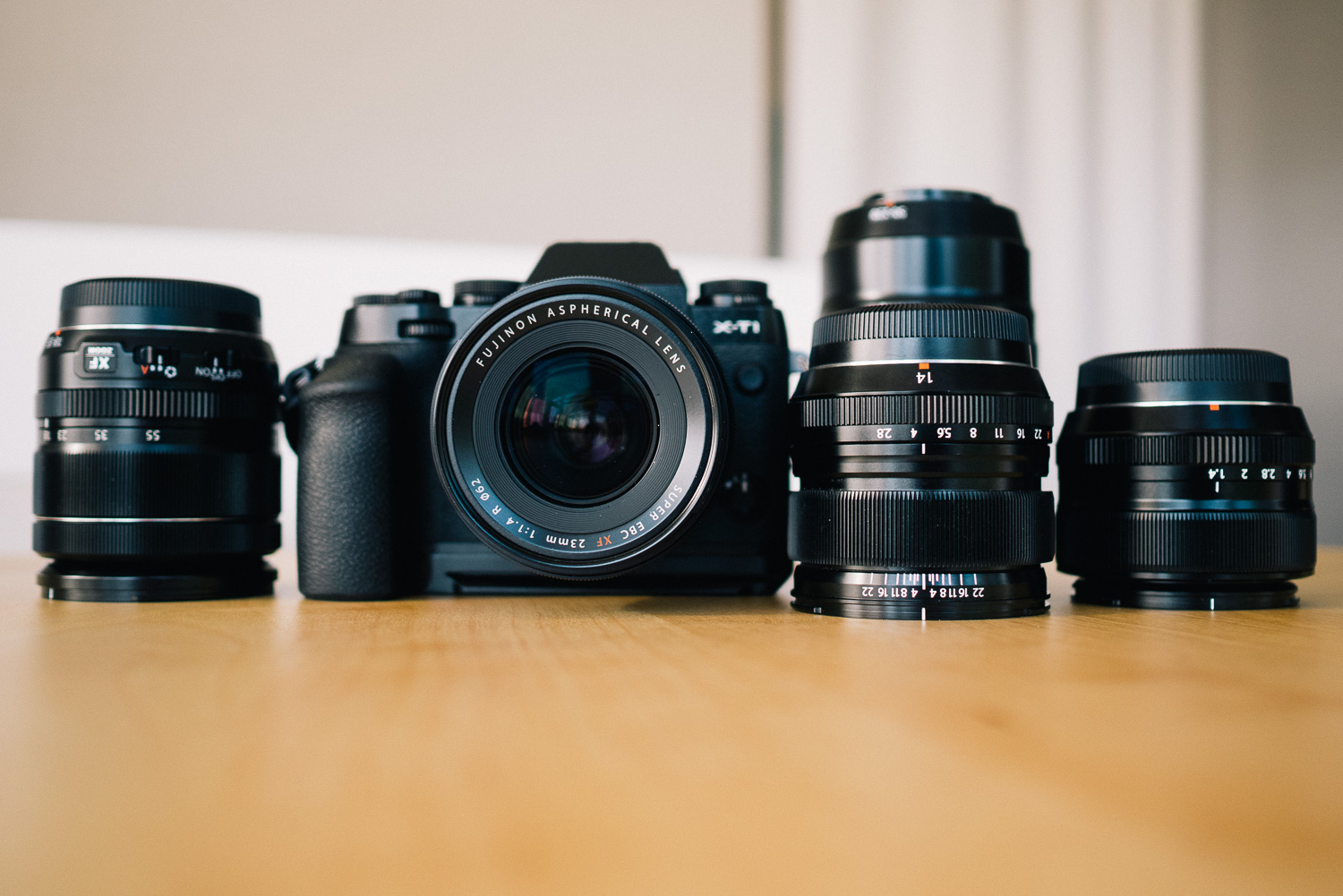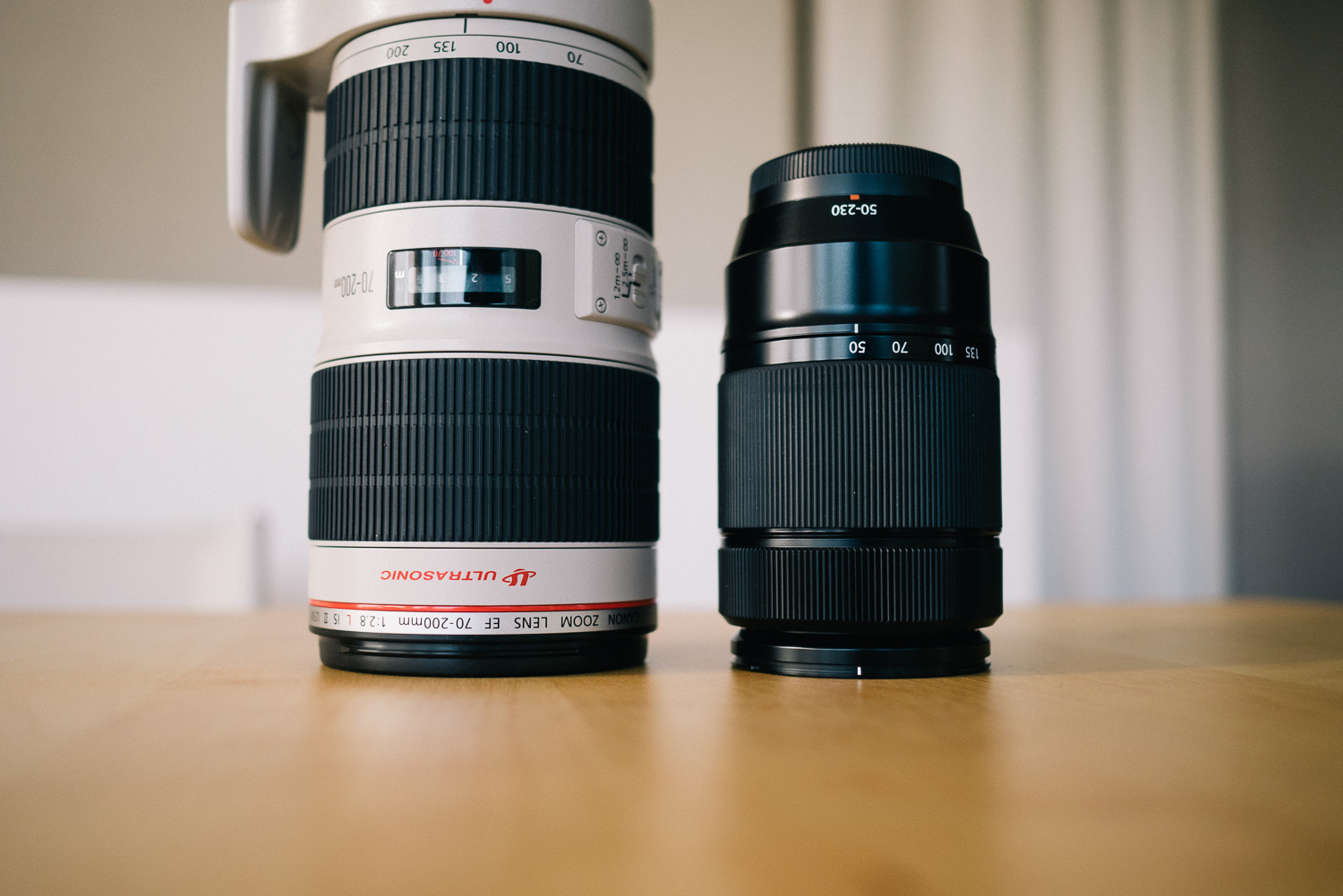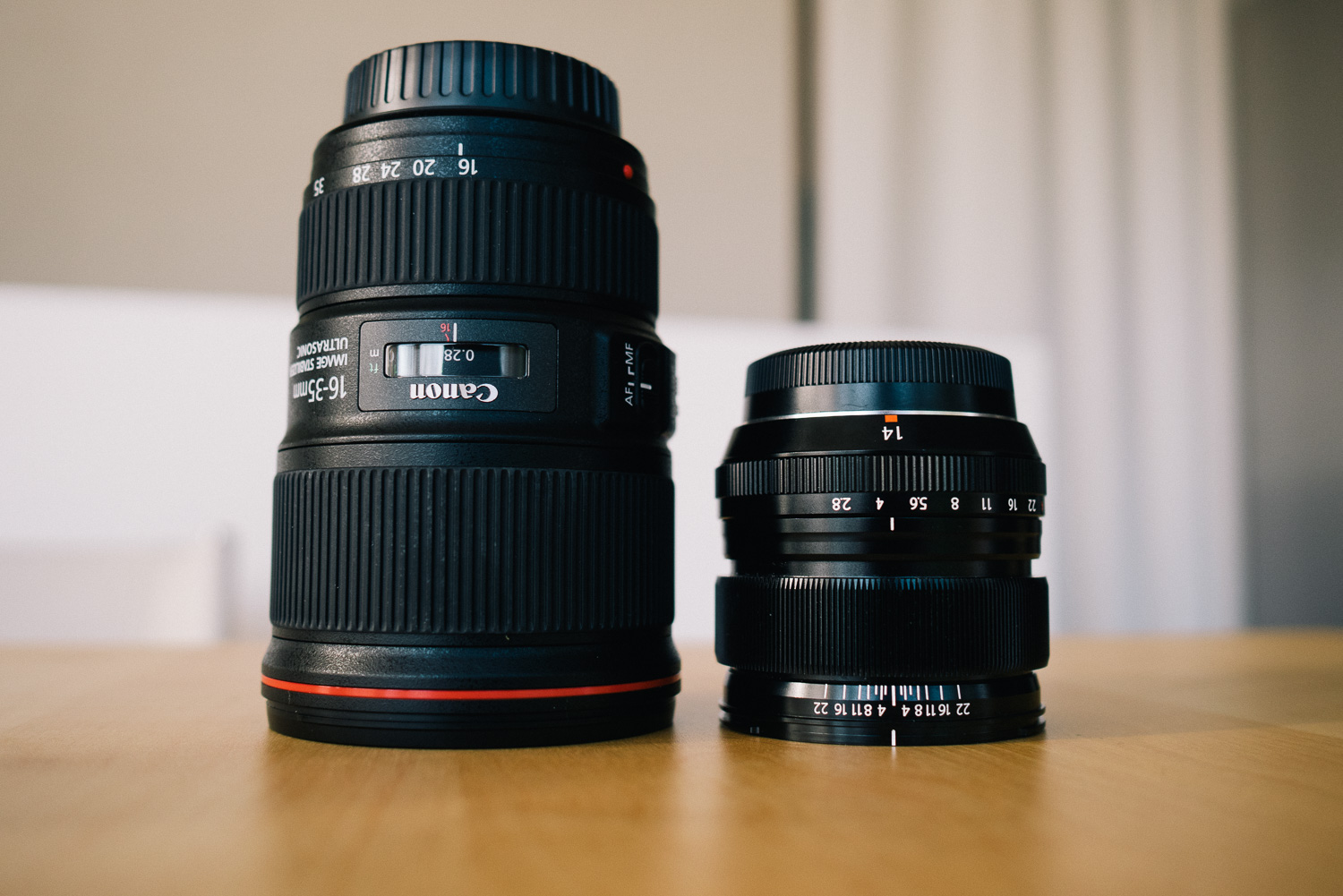 Panasonic DMC-GM1 (17mm, f/1.8, 1/400 sec, ISO200)
Panasonic DMC-GM1 (17mm, f/1.8, 1/400 sec, ISO200)
Less is more. If you can’t afford the real thing get something a lot cheaper and smaller but just as good. Most of the time this is nothing but a cheap marketing trick! A Range Rover Evoque is a nice car but it’s not a Ranger Rover.
It’s the same with a most things. Less is simple less. But there are some rare exceptions. Smaller boxes can be more fun sometimes. My old but still fantastic Dynaudio Confidence 3 speakers are a great example. They are not cheap though. And this is where this rather complicated intro that involved luxury cars and expensive loudspeakers gets me to Fuji’s lenses. Most of them are much smaller and lighter compared to full frame lenses but they don’t come cheap. Some are fantastic value though.
Here I want to compare the Fuji lenses with the lenses I use on my Canon 6D. What I liked and what I didn’t like about them.
 Panasonic DMC-GM1 (17mm, f/2.2, 1/250 sec, ISO200)
Panasonic DMC-GM1 (17mm, f/2.2, 1/250 sec, ISO200)
The first comparison deals with the kit lenses. OK. The 2.8/24-70 II from Canon is anything but a kit lens but I do not longer own the 24-105 L or the 4/24-70 IS so I have to compare it with the fantastic mk II.
Before I went on my USA vacation I was looking forward to use the big Canon. When I had to switch to my smaller gear last minute my biggest concern was to swap the 24-70 with the Fuji 18-55 mostly for two reasons: field of view and depth of field.
The Fuji starts at 27mm in full frame terms and I think that is its biggest negative point. It also has more distortion than I like on its wide end. Distortion was the main reason for me to upgrade from the 24-105L. Since I’m shooting RAW it is a real issue for me as there is no lens profile for Fuji lenses in Lightroom.
Beside these issues it is a fine lens. Maybe not as good as you might think when looking at the glowing reviews but I think that’s because most of the times it is compared to other kit lenses and compared to them it is much better. It is a very good lens and a very good deal when purchased together with the camera. If you have to buy it separately it is rather expensive at least where I live. To sum it up: it is a very good but it is not an outstanding lens.
To add a little magic now and then I got the Fuji XF 1.4/23. It can produce fantastic results. Bokeh is really nice and the depth of field is narrower than what I get with the fast Canon zoom. Both lenses together are still a lot lighter and still cheaper than the 24-70 II.
 Panasonic DMC-GM1 (17mm, f/1.8, 1/640 sec, ISO200)
Panasonic DMC-GM1 (17mm, f/1.8, 1/640 sec, ISO200)
 Panasonic DMC-GM1 (17mm, f/2.2, 1/200 sec, ISO200)
Panasonic DMC-GM1 (17mm, f/2.2, 1/200 sec, ISO200)
Beside the kit or standard zoom the second lens usually is a tele zoom. Here the physical difference in between my Canon 2.8/70-200 IS II and my Fuji XC 4.5-6.7/50-230 OIS is even more striking. The Canon is a 1.5kg monster while the Fuji is small and compact and offers more reach than the Canon zoom plus 1.4x converter.
Regarding value for money I think the Canon is still a bargain considered its optical quality but the Fuji is even better value. I got it as part if the Fuji X-M1 double zoom kit. That way the lens comes for free! Beside this amazing deal this lens has one big advantage over Fuji’s faster 55-200 lens: weight! My main reason to buy into Fuji’s X cameras was weight. That’s why a passed on the 55-200. It was just too bulky and heavy for my taste. Of course the 50-230 is slower than its brother and much slower than the Canon but in landscape shots that doesn’t matter at all.
Autofocus is slow and it can hunt occasionally but again for landscapes it is nothing to worry about. I still managed to shoot some nice images of surfers and even hummingbirds with it. I find its sharpness to be very good. Much better than I expected. A clear winner. It’s a very good lens if you want to keep the weight of your gear as low as possible and its a good lens if you are waiting for the upcoming 2.8 tele zoom from Fuji but need something for now. What hurts a little is the plastic lens mount and the cheap, white plastic cap that covers it when the lens sits in the bag.
 Panasonic DMC-GM1 (17mm, f/2.2, 1/400 sec, ISO200)
Panasonic DMC-GM1 (17mm, f/2.2, 1/400 sec, ISO200)
On my last years trip I had no super wide angle zoom because after getting used to the fantastic 14mm lens from Fuji I sold my Canon 17-40L. This year Canon finally introduced a new high quality 4/16-35 IS and this is just one great lens.
I still had no problem to use the 14mm instead of the more flexible Canon zoom and here is why: I found out that I really love to shoot at a full frame focal length of 21-24mm. Anything longer is not wide enough but anything shorter looks unnatural to me. Super short focal lengths can give spectacular results but the trow to much attention on themselves. The foreground gets very pronounced and the background becomes very small and as a consequence images look unbalanced.
The 14mm on the Fuji is just perfect. It’s a little wider than 24mm which can help in tight places and it has zero distortion. It is such a joy to look through the viewfinder and see straight lines. Sharpness up to the edges is great from f4 and AF is fast. What more can you ask for?
What did I miss most? How did it feel shooting with “small” gear?
First of all my gear wasn’t that small at all. I brought the X-T1 and the X Pro-1 plus the 14, 23, 35, 18-55, 50-230 and the Ricoh GR. I didn’t use the GR and the 1.4/35. I put all the stuff in my ThinkTank Streetshooter back bag that I normally use for my DSLR. I also packed my ThinkTank Retrospective 5 bag which is still my favorite camera bag. I used the small shoulder bag when I was shooting in a city with the X-T1 plus the 14mm and the 18-55. Both lenses share the same lens hood which is a great thing.
For regular shootings I used the Streetshooter to hold the second camera body with the 50-230 attached. When shooting at places like Bryce Canyon I shot with the kit zoom on the Fuji X-T1 and with X Pro-1 plus 55-230 hanging on my shoulder. Sometimes I was leaving the bag in the car just wearing the two cameras with the zooms. I started to shoot this way in Canada in 2007 when I used the 5D plus 24-105L and the 500D plus the 4/70-200 IS. It’s very effective. The X Pro-1 plus the 55-230 is weighing next to nothing. With the X-T1 plus the kit around my neck it was the same. I guess it will be hard to go back to a 6D plus 24-70 II and maybe a 7DII plus the 70-200 II. Too much gear can be a burden!
Small cameras and small lenses are a revelation. I didn’t lift around more gear than most of the other tourists. The X-T1 plus kit is about the same size an weight than the smallest Canon Rebel plus kit lens but quality is much better. The 50-230 is smaller and lighter than anything I have ever used in that range but it still gives plenty of reach. Before I went on the trip the 18-135 was not available where I live but meanwhile I tried it out in Singapore and I didn’t like its size and weight. As much as I would love to have a one lens solution I don’t want to have such a heavy lens on my camera all the time just for the occasional tele shot plus 135mm is not enough to get the compressed look in landscapes that I like and I think I already mentioned that 18mm is not wide enough.
Talking about weight. On this vacation the Fuji replaced my big gear and therefore weight was not such a big deal compared to my business trips in Asia where equipment has to be super light and small. Therefore I consider to replace the 18-55 with the upcoming 2.8/16-50. Mainly because of its “wider wide end” but also because of its constant aperture. 2.8/50 can give nice background blur in portraits which will make the lens much more versatile than the 18-55. If it’s distortion is low it could also replace the 14mm in a lot of cases. That would dramatically reduce the number of lens changes which is always a good thing but particularly in the deserts.
I will definitely keep the 50-230 because. It is such small and light lens it offers a very good range. I didn’t use the 1.4/35 on this trip but mainly due to the fact that I hate to swap lenses and because of the new 1.4/23. The 1.4/35 is still a great lens and it weighs next to nothing so it will always be with me on my Asia trips. It is a great lens for portraits. The 1.4/23 is fantastic lens but it is big and heavy. Its lens shade is so big and ugly that for the first time ever I refuse to use it. But even the lens alone is something that you don’t put in a small shoulder bag just in case you might use it. On small shootings I will decide in between the 1.4/23 and the 18-55 depending on the subject. The 18-55 is more versatile but the 1.4/23 can give you those special shots.
So what would be the perfect Fuji gear?
For big vacations and focus on landscape I would take:
- 2.8/14 (landscape, street, architecture) or get the 10-24 if focus is on landscape
- 1.4/23 (portraits, low light, details)
- 2.8/16-50 (everything, portraits) not so sure anymore, the lens is a beast (too heavy)
- 4.5-6.7/50-230 (landscape, wildlife)
For city trips and my business trips to Asia I would still bring:
- 2.8/14 (everything)
- 1.4/23 (portraits, low light, details) or even just the 2.8/27 to save weight
- Ricoh GR (out of car and street shooting)
I just realized that my article has become A: too long and B: that it didn’t answer any questions. So the only thing left to do is to quote Brecht: “Wir stehen selbst enttäuscht und sehn betroffen / Den Vorhang zu und alle Fragen offen.”

